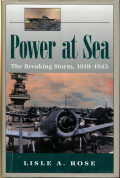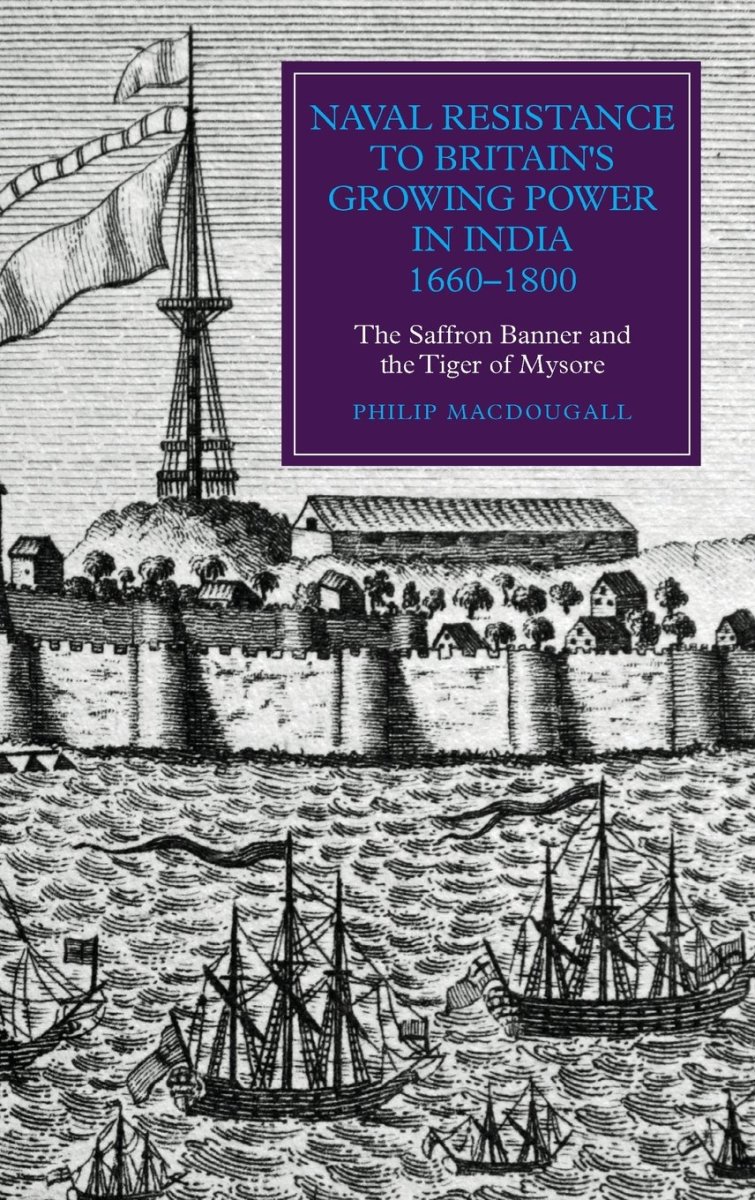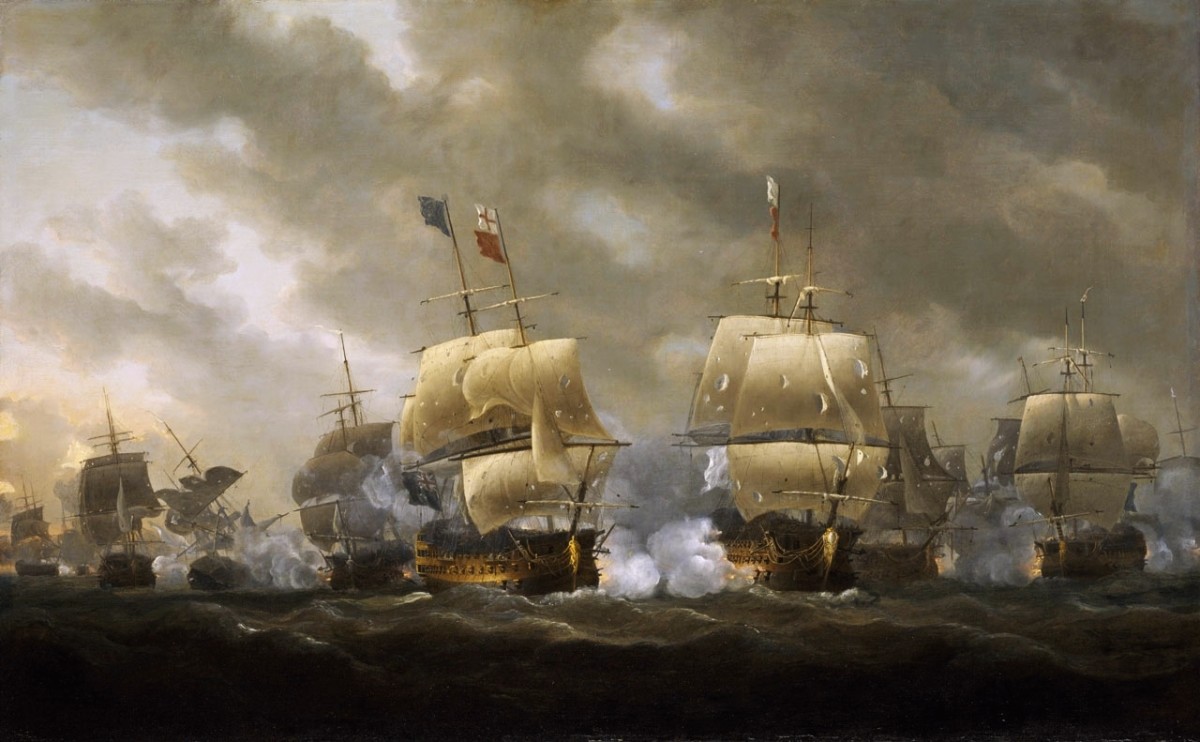Power at Sea: The Age of Navalism, 1890-1918 Review - Too Generalized for a Summary, not Detailed Enough for a History
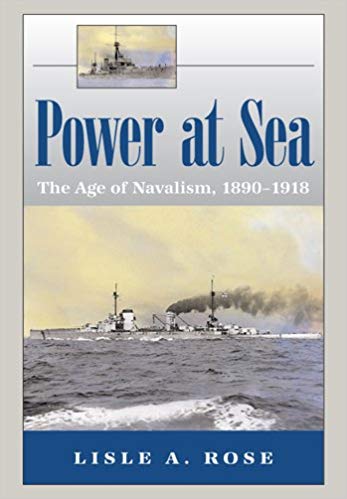
The Age of Navalism has the appearance of an impressive look about it. Thick, an obligatory picture of a dreadnought battleship under sea, part of a set of books in a blue-bound binder giving the sense of comfortable dignity, the sort of volumes that one might find in a retired naval officer's library or a historian's wall, or an armchair general. And in theory, the book lives up to its name, covering more than just the tactical and operational developments of ships throughout the early 20th century, but also the thought behind them, navalism, their impact on broader society, the social conditions of the navy, combat operations during the wars, etc. Unfortunately The Age of Navalism, 1890-1918, is let down by a vast number of errors, exceptions, and generalizations, which makes it a marginal and mediocre naval history volume.
Content
An introduction to the book lays out the importance of sea powered, and the contours of the three-book series, brief preface covers the history of the era being covered by this particular tome, some of the ideas of the author - that all navies were stilted and archaic in their social relationships, save for the United States Navy, and the objectives of the book.It is followed by the acknowledgements and an array of painfully simple maps.
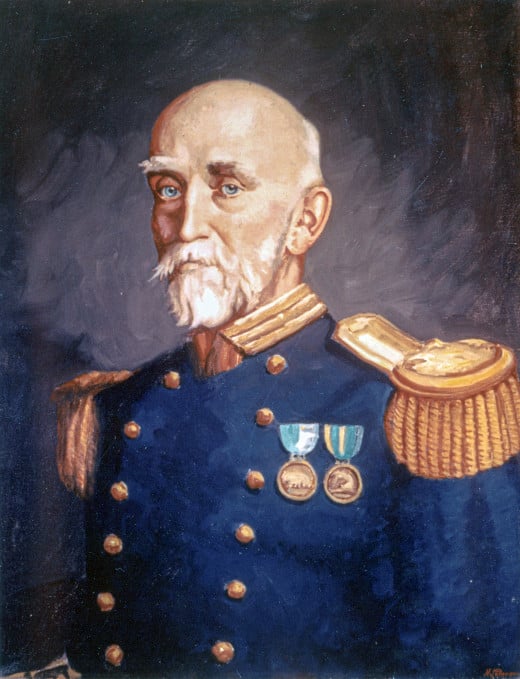
A prologue declares the centrality of Alfred Mahan for producing the navalist thought that would propel the era, and notes that such changes of thought were at least as important as military technology changes. The first chapter of the book then lays out the resurgence of naval power as a crucial aspect of international politics, the rapid growth of the American navy, the effect birth of the German navy under Tirpitz, and the massive reforms that shook the Royal Navy under Fisher, seeking to change its mindless discipline and blind conservatism.
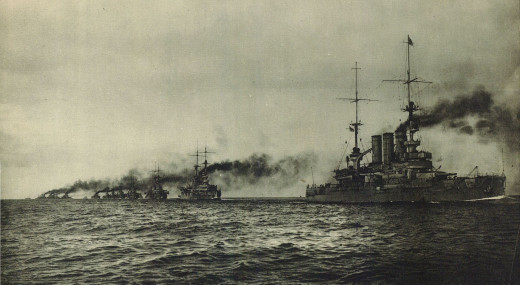
The second chapter then devotes itself to the buildup of the German navy and the ideology behind it - that of promoting Germanism around the world. It helped to ignite a massive change in European politics by bringing Britain out of isolation, the British countering the growth of the German navy which threatened to achieve local superiority through building an alliance with the French. Nevertheless both sides were thrown into a major arms race which is covered both in practical but also cultural terms in the book, with fear and dislike generated between the British and Germans by it. The Germans however, never managed to come up with suitable military plans to actually use this fleet that they had constructed, leaving it largely useless when war came against a British distant blockade.
In the third chapter, the spotlight switched to Japan, covering the birth of the Imperial Japanese Navy and its relationship to nation-building, as well as its superb performance in the First Sino-Chinese War and then in the Russo-Japanese war. It also notes some of the initial tensions between the United States and Japan, as the United States expanded across the Pacific as well. The crews manning the Japanese ship, courageous, disciplined, well trained, and confident, but also under ferocious discipline and cruel treatment by their officers.The Japanese navy's victory over Russia dramatically raised Japan's stature in world perspective, pleased the English who had allied with them, and led to heightened tensions with the Americans over conflicting issues and the dramatic elevation of the Japanese navy.
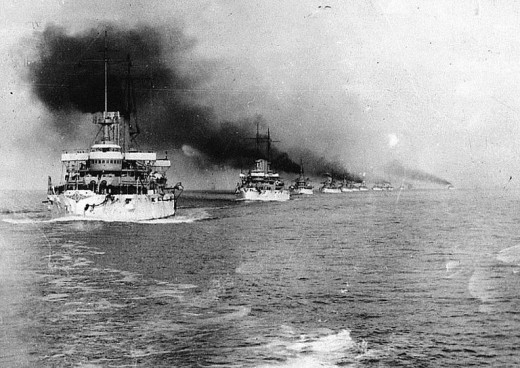
Moving onto the Americans, Chapter 4, continues Rose's focus on the sailors of the fleet, this time portraying a navy which grew far more humane and liberal in its treatment of crews, albeit with the important exception of blacks who were increasingly driven from the navy, and which enjoyed important gains in education and training. War plans are covered for conflicts with the Japanese and proposals concerning action in several other scenarios, and the American strategic thinking behind the Panama Canal. Like with the Anglo-German naval arms race it also recounts the climate of fear and tensions existing between the Japanese and Americans, as sensationalist war predictions on the American side voiced fears about Japanese invasions of the West Coast.. It also vaunts improved American technology but above all else the around-the-world cruise of the American White Fleet under Roosevelt, stressing major cultural ramifications by drawing British dominions to the United States and enhancing American prestige, although nearly sparking world war on several points. The chapter ends with stressing the importance of navalism in the public conscience around the world, and with the book's photographic section, consisting of a number of portraits and ship pictures and battle depictions.
Chapter 5 is an exceedingly short one which details the tensions increasing prior to the war, some plans, and the lack of coordination and central planning to respond to the coming war.
Chapter 6 covers the opening days of the war, with the relative inactivity of the German fleet, and Rose proposing his alternative plan for it, to have sortied into the English channel to raid British shipping and destroy the channel ports to enable the German army to triumph in the West. After this particular bout of imagination he goes onto the Mediterranean with the German ships Goeben and Breslau who fled to Turkey and played a key role in bringing it onto the Central Powers side. The occasional German sorties out to attempt to bombard British towns and sink the High Seas Fleet are the next target of attention, failures which did nothing to alleviate the damage done by the British blockade, and then the failed Allied attempts to take the Dardanelles and knock the Ottoman Empire out of the war.
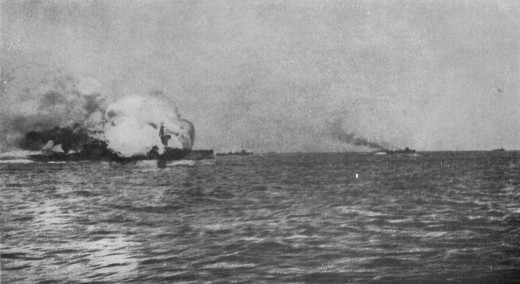
Chapter 7 is a detailed description of the Battle of Jutland, the massive but confused battle between the British and German navies, where the Germans inflicted more damage on the British but not enough to convincingly win, and where the British continued to have command of the sea.It did however, harm the prestige and moral standing of the Royal Navy due to its tactical defeat on the waves. The German fleet atrophied from lack of use, and instead it would turn to submarines to attempt to defeat the British and to blockade the British in turn.
Chapter 8 takes a tour under the waves, regarding the submarine warfare campaign. Starting its depiction from the sinking of the Lusitania, a passenger ship whose destruction and the massive loss of life was viewed as an atrocity across the world, even as the Germans defended their actions and praised the submarine's crew. With blockade pressing heavily on Germany and desperate to strike back at the British, the German submarine warfare campaign gradually became more and more harsh, despite several attempts at operating under cruiser rather than unrestricted submarine warfare rules. Terrifying and costly for both the submariners in their fragile u-boats and the merchant ships torpedoed in the storm-tossed waves of the North Atlantic, submarines inflicted a grievous toll on the Allied merchant marines, sinking more than 10 million tons of shipping throughout the war, although ultimately improving anti-submarine warfare tactics and convoy warfare blunted their success. Hundreds of German submarines were lost in exchange, but it was a campaign which was clearly more costly for the Allies. But it had the disastrous effect of pulling the Americans onto the Allied side, and not defeating the British quickly enough to prevent the Americans from helping the Allies to victory. This they did, with assistance in the anti-submarine warfare campaign and the dispatch of naval assets to help the British Grand Fleet. The war ended with the Americans set to become perhaps the dominant naval power, with their massive industry and naval construction, and the Japanese having definitively established themselves as the third greatest naval power in the world, benefiting tremendously from the conflict, while the German fleet was defeated and lost.
Review
There are certainly some positive aspects about this book. It is a lengthy tome after all, and it does give an impression of the moral and cultural effects of naval and sea power, which might have been ignored in a purely military history. Certainly, some of these might have been exaggerated, as historians of any particular subject tend to wax poetic about their influence, and at times there are seemingly vastly exaggerated declarations about the emotional impact of the fleets upon civilian populations, but bringing back the impact of the navies to the normal people of the world is rarely done and at least makes an appearance here.
Similarly, it does cover what life was like for the sailors of the fleets, their background, and what sort of discipline and environment they faced on their ships was. This isn't nearly as in depth as a book devoted purely to the subject might have been, but it is something and is a blindspot in other books.
In its broad outlines, it also does a reasonable job of covering the principal naval combats of the period, such as the Russo-Japanese War and the North Sea and Atlantic theaters of the First World War, although it misses anything to do with secondary theaters and their navies, such as the Adriatic in the First World War.
This is not the only significant weakness which is included in the book. To start with, while the book includes a lot of social history, the conclusions which it draws from its social history aren't very convincing. It makes the claim that the Royal Navy, German Navy, and Japanese Navy were ultimately shackled and constrained by the rigid social structures and/or political organization of their nations, and that in contrast the American Navy ultimately produced a sailor and organization which was more flexible, inventive, innovative, and successful. This is not backed up with much in the way of examples - the British navy was always known for its dash and daring, as could be seen in its variety of raids on Germany, and various innovative ideas and proposals that it constantly dredged up. The Japanese navy came up with novel and effective tactical plans and organizations to fight a war in the Pacific against first the Russians and then later the Americans. And the German navy's relative lack of initiative seems more due to strategic handicaps and the cautious nature of the German command than cultural factors. Rose writes off the great obvious counter-example, the highly innovative and effective German U-Boat arm, as an exception, seemingly something that is an exception that proves the rule, instead of ruining his thesis with such a glaring hole.
There is a tendency to not explain concepts throughout the book. Rose critiqued the Royal Navy for not building classes of ships and instead going for small groups and single vessels before the Admiral-class ironclad in the 1880s, and claims that these vessels were bad, but never explains why these vessels, which seem respectable enough on the surface, were poor. Nor does he engage with the rapid nature of naval construction which would have made large classes of ships block obsolete quickly, nor the fact that the Royal Navy had built classes larger than just 2 ships before, such as the Audacious-class ironclads.
This trend continues with battle-cruisers, where he makes the claim that the loss of armor that the battle-cruisers endured would have been worth it for the British if they had gained 5-8knots of extra speed, but the 5 knots that they gained made them bad bargains. Ignoring that 5 knots falls within the range of what he himself defines as making them cost-effective, there is no explanation for why this arbitrary speed advantage would make them good - by contrast, most of the time it is assumed that a 3 knot speed advantage would make one battle line capable of crossing the T of another battle line. There needs to be additional detail and support built into his argument, and it simply isn't there. The same can be applied to various operational plans suggested by the author Rose, where they lack painfully in supporting details and seem foolhardy, such as the propositions of the aggressive usage of the German High Seas Fleet for a channel raid - more likely to get sunk and not cause any serious damage to the Western Front in 1914 in light of the limited military forces that Britain contributed there in any case. It also carries a comic overestimation of naval forces sometimes, such as claiming that the German navy, with its single battlecruiser and light cruiser, might conceivably disrupt French troop transfers between North Africa and Metropolitan France in 1914, despite the overwhelming superiority of numbers of the French fleet present in the region.
Technical arguments made in favor of balance of power are lacking at times, such as for example noting the strengths of battleships in the late 19th century but focusing above all else upon their main batteries, when the secondary batteries were also perceived as being crucial armament systems: this is downplayed to an ahistorical extent. When at times they are delved into, these technical questions are ill-treated by the author: he claims for example that American fire control was at least the equivalent and perhaps better than British fire control, but then admits that American fire control was actually substantially worse than British fire control during the First World War. British ships are castigated as having inferior deck armor protection, despite this being a common feature of all dreadnoughts of the time. German guns are lauded as superior, but then castigated for being smaller than their British counterparts. Navies are assigned too great of a role in the international balance of power and decision making, with only the naval aspect being discussed by the author in regards to pre-WW1 diplomatic crises, and almost nothing at all comes about about the armies: it makes the author it into almost a caricature, since he comes off as even more fanatically navalist than even the most navalist leaders of the time such as Kaiser Wilhelm II.
What is covered by the book is exceedingly limited when one gets down to it. The book's definition of seapower only really goes to the United States, Great Britain, Germany, and Japan. There is next to nothing which is included about other nations except where they relate to these powers: what about the French, Italian, Russian, Austrian navies? What about the minor powers and their own strategies? There is only the very top naval nations and nothing of the rest. It is the story of what is already well known and understood, and entire major uses of seapower - such as the Austro-Hungarian fleet's fight against the French and then Italian fleets, the fights between the Ottoman-German navy and the Russian fleet, or the Russian naval war against Germany. Alternate employments of seapower outside of the great powers, such as coastal defense or littoral fleets such as those of Sweden and to some extent Russia with its impressive pre-WW1 coastal defense positions intended to defend St. Petersburg, are ignored.
The book lacks tremendously in technical annexes and indexes. With most naval history books one might expect something like a chart of capital ships, naval ship tonnage, maps of principal naval bases, perhaps charts of technical aspects of ships, orders of battle of major fleets. There is none of this here - the book is all but bare of any such detail, with only a few pathetic world maps at the beginning. It sets a tenor to the book - lacking in detail, and with what detail there is often being incorrect.
This book has too many flaws to make it into a good summary or introduction, and lacks sufficient detail to usefully expand the subject for readers who have already read much about naval warfare and policy from the era. Its only limited saving grace, dealing with social aspects of naval life and conditions on the ships, is marred by some of the excessive leaps of logic that Rose takes. Power at Sea: The Age of Navalism, 1890-1918 is best avoided.
© 2020 Ryan C Thomas


